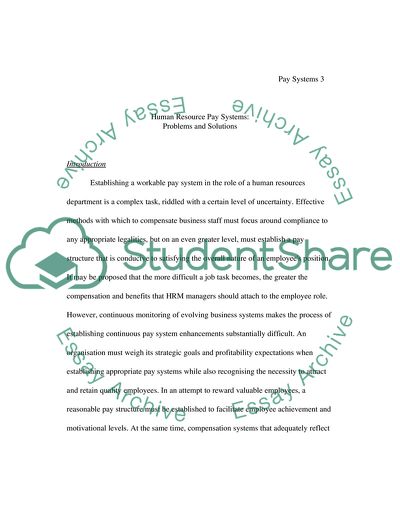Cite this document
(“Human Resource Pay Systems Term Paper Example | Topics and Well Written Essays - 4500 words”, n.d.)
Human Resource Pay Systems Term Paper Example | Topics and Well Written Essays - 4500 words. Retrieved from https://studentshare.org/sociology/1703802-pay-systems-are-regarded-as-one-of-the-more-problematic-components-of-the-hrm-human-resource-management-bundle-identify-the-reasons-for-this-and-discuss-the
Human Resource Pay Systems Term Paper Example | Topics and Well Written Essays - 4500 words. Retrieved from https://studentshare.org/sociology/1703802-pay-systems-are-regarded-as-one-of-the-more-problematic-components-of-the-hrm-human-resource-management-bundle-identify-the-reasons-for-this-and-discuss-the
(Human Resource Pay Systems Term Paper Example | Topics and Well Written Essays - 4500 Words)
Human Resource Pay Systems Term Paper Example | Topics and Well Written Essays - 4500 Words. https://studentshare.org/sociology/1703802-pay-systems-are-regarded-as-one-of-the-more-problematic-components-of-the-hrm-human-resource-management-bundle-identify-the-reasons-for-this-and-discuss-the.
Human Resource Pay Systems Term Paper Example | Topics and Well Written Essays - 4500 Words. https://studentshare.org/sociology/1703802-pay-systems-are-regarded-as-one-of-the-more-problematic-components-of-the-hrm-human-resource-management-bundle-identify-the-reasons-for-this-and-discuss-the.
“Human Resource Pay Systems Term Paper Example | Topics and Well Written Essays - 4500 Words”, n.d. https://studentshare.org/sociology/1703802-pay-systems-are-regarded-as-one-of-the-more-problematic-components-of-the-hrm-human-resource-management-bundle-identify-the-reasons-for-this-and-discuss-the.


